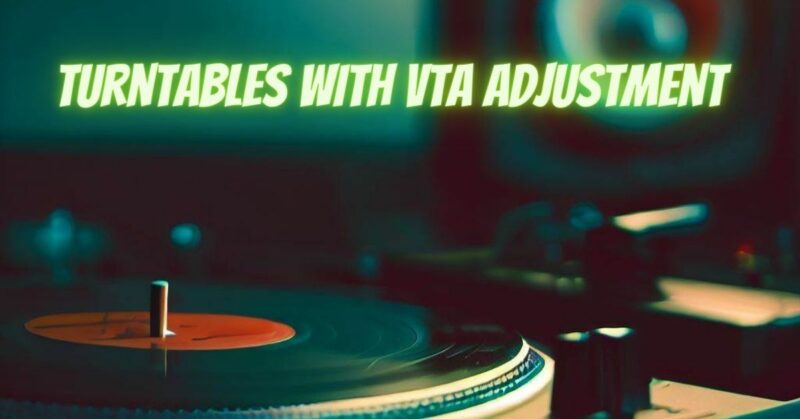In the world of analog audio, turntables hold a special place for their ability to reproduce music with a warmth and character that captivates audiophiles and music enthusiasts alike. To extract the best possible sound quality from your vinyl records, the setup of your turntable is critical. One essential feature for achieving optimal playback is the Vertical Tracking Angle (VTA) adjustment. In this article, we’ll delve into the significance of VTA adjustment and how it contributes to your vinyl listening experience.
Understanding Vertical Tracking Angle (VTA):
The Vertical Tracking Angle (VTA) is an angle formed by the stylus (the needle) and the surface of the vinyl record as it makes contact with the groove. This angle is crucial because it directly affects the quality of sound reproduction. Proper VTA adjustment ensures that the stylus tracks the groove accurately and extracts the most detailed audio information.
The Importance of VTA Adjustment:
- Optimal Stylus Contact: A correctly adjusted VTA ensures that the stylus sits in the groove at the right angle, allowing it to make precise contact with the record’s walls. This minimizes tracking errors and distortion, resulting in clearer and more accurate sound reproduction.
- Reduction of Surface Noise: Incorrect VTA can lead to excessive surface noise and sibilance, as the stylus may scrape against the groove’s walls. Proper adjustment reduces these unwanted artifacts.
- Balanced Sound: VTA also plays a role in balancing the tonal qualities of your audio. Incorrect VTA can lead to overly bright or dull sound, while proper adjustment helps achieve a more natural and balanced presentation.
- Optimized Tracking Force: VTA adjustment is closely tied to tracking force, the downward pressure applied by the tonearm. Proper VTA ensures that the stylus tracks the groove optimally without excessive wear on the record or stylus.
Turntables with VTA Adjustment:
Not all turntables offer VTA adjustment, but many high-quality models come equipped with this feature. Here’s how it typically works:
- Height Adjustment: Turntables with VTA adjustment allow you to raise or lower the tonearm, changing the stylus’s angle in relation to the record surface.
- Precision Control: VTA adjustment mechanisms often feature fine-tuning controls, enabling precise angle adjustments to achieve the perfect VTA setting for different records.
- Dedicated Tools: Some turntables include dedicated tools or scales to help users set the VTA accurately, ensuring a hassle-free adjustment process.
Setting the VTA:
Setting the VTA correctly can be a meticulous process that involves:
- Listening Tests: Use your ears to judge the sound quality and make adjustments accordingly.
- Visual Alignment: Observe the stylus’s position in the groove and its angle of contact. It should appear parallel to the record surface.
- Fine-Tuning: Make small adjustments until you achieve the best sound quality for a particular record.
Turntables equipped with Vertical Tracking Angle (VTA) adjustment provide an essential tool for vinyl enthusiasts seeking the best possible sound quality. By allowing precise control over the stylus’s angle of contact with the groove, VTA adjustment ensures accurate tracking, reduced surface noise, and a balanced sonic presentation. When paired with high-quality components and meticulous setup, VTA-adjustable turntables can elevate your vinyl listening experience to new heights, allowing you to savor the rich, analog sound of your vinyl records with greater fidelity and clarity.


